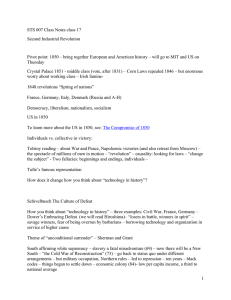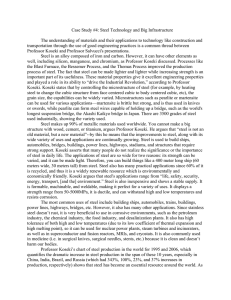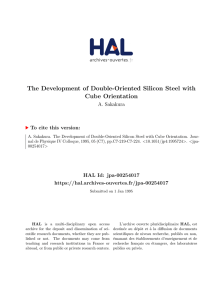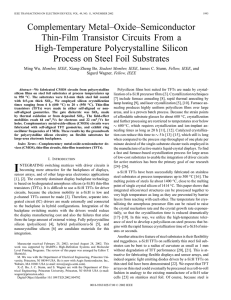Case Study #4 GS and SL Case Study #4GS
advertisement
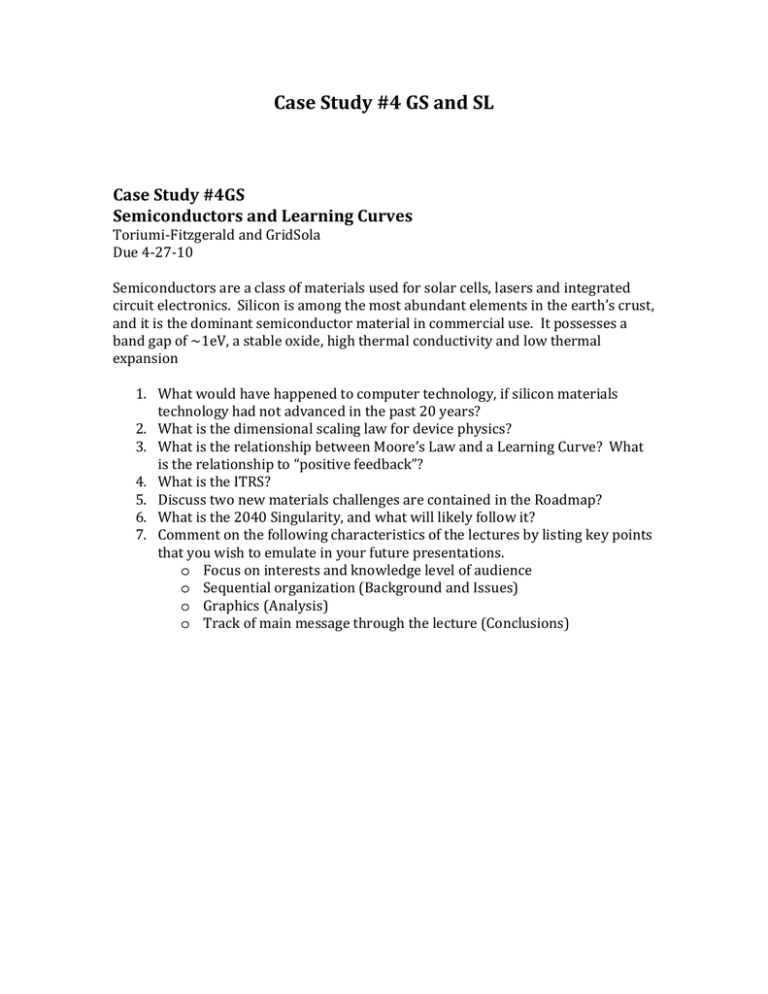
Case Study #4 GS and SL Case Study #4GS Semiconductors and Learning Curves Toriumi-Fitzgerald and GridSola Due 4-27-10 Semiconductors are a class of materials used for solar cells, lasers and integrated circuit electronics. Silicon is among the most abundant elements in the earth’s crust, and it is the dominant semiconductor material in commercial use. It possesses a band gap of ~1eV, a stable oxide, high thermal conductivity and low thermal expansion 1. What would have happened to computer technology, if silicon materials technology had not advanced in the past 20 years? 2. What is the dimensional scaling law for device physics? 3. What is the relationship between Moore’s Law and a Learning Curve? What is the relationship to “positive feedback”? 4. What is the ITRS? 5. Discuss two new materials challenges are contained in the Roadmap? 6. What is the 2040 Singularity, and what will likely follow it? 7. Comment on the following characteristics of the lectures by listing key points that you wish to emulate in your future presentations. o Focus on interests and knowledge level of audience o Sequential organization (Background and Issues) o Graphics (Analysis) o Track of main message through the lecture (Conclusions) Case Study #4SL Steel Technology and Big Infrastructure Koseki-Salvucci and SolaLoco Due 4-27-10 Iron is among the most abundant elements in the earth’s crust. It is a constituent in structural materials where strength/weight is a design Figure of Merit. 8. What are the properties of steel that make it so useful? 9. What is the composition of steel? 10. What are some applications for the use of steel? 11. Give examples of data that show the ubiquitous use of steel and the continuing need for improved steel materials technology. 12. What role did structural steel play in Boston transportation? 13. What problem and design constraints resulted in the Big Dig? 14. Comment on the following characteristics of the lectures by listing key points that you wish to emulate in your future presentations. o Focus on interests and knowledge level of audience o Sequential organization (Background and Issues) o Graphics (Analysis) o Track of main message through the lecture (Conclusions) MIT OpenCourseWare http://ocw.mit.edu 3.003 Principles of Engineering Practice Spring 2010 For information about citing these materials or our Terms of Use, visit: http://ocw.mit.edu/terms.


